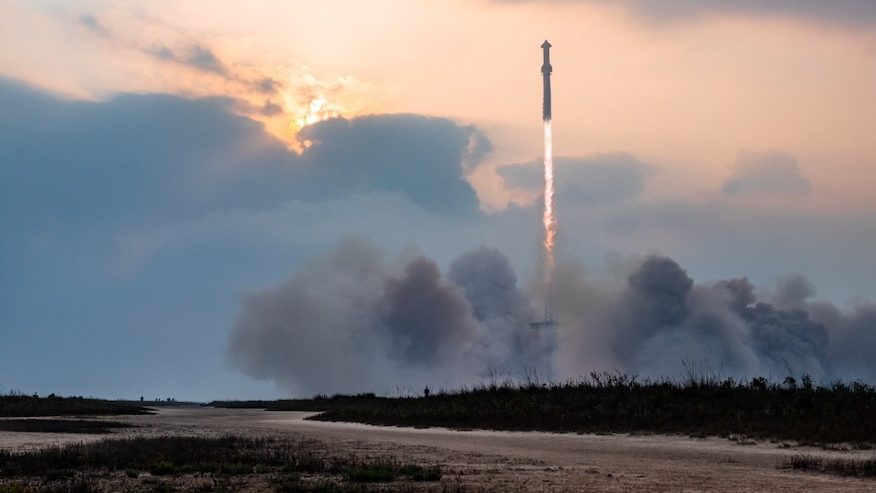SpaceX Accomplishes First Soft Splashdown of Starship, Super Heavy Booster on Flight 4 Mission

Introduction
In a groundbreaking achievement, SpaceX has successfully completed its fourth test mission of the massive Starship rocket from its development facility, Starbase, in southern Texas. The Flight 4 mission marks a significant milestone toward creating a mostly reusable rocket.
Flight 4 Launch Details
Flight 4, similar to its predecessors, flew a suborbital trajectory without a payload. However, this mission stood out due to the successful soft splashdown of both the Super Heavy Booster (Booster 11) and the Starship upper stage (Ship 29). The launch occurred at 7:50 a.m. CDT on a 120-minute window opening.
Preparations and Objectives
Before the launch, SpaceX stacked Ship 29 atop Booster 11, creating the towering 121 m (397 ft) Starship rocket. Elon Musk, SpaceX’s founder, highlighted that the primary goal was to penetrate deeper into the atmosphere during reentry, aiming for maximum heating. Despite some damage, the mission was celebrated for its successful reentry.
Overcoming Challenges
Previous missions faced various issues, including uncontrollable rolling of the upper stage during Flight 3. SpaceX addressed these problems by upgrading roll control thrusters and hardware to improve resilience against blockages. Similarly, modifications were made to the Super Heavy Booster to prevent premature engine shutdowns.
Looking Ahead to Flight 5
With the success of Flight 4, Musk hinted at an ambitious goal for Flight 5: catching the Super Heavy Booster using the launch tower’s “chopsticks.” This innovative approach aims to enhance the reusability and efficiency of the Starship system.
NASA Collaboration and Future Missions
Flight 4’s success is crucial not just for SpaceX but also for NASA’s Artemis missions. The rocket will play a key role in the Artemis 3 mission, targeted for September 2026. Lisa Watson-Morgan, the manager of the Human Landing System (HLS) program, emphasized the importance of ongoing collaboration with SpaceX to develop the rocket for lunar missions.
Technological Advancements
SpaceX’s ability to transfer propellant, a critical component for lunar missions, was successfully demonstrated. This achievement aligns with a $53.2 million Tipping Point contract with NASA’s Space Technology Mission Directorate (STMD). Future missions will involve more advanced propellant transfer techniques, crucial for deep space exploration.
Expansion and Infrastructure
SpaceX is expanding its launch capabilities with a second launch tower at Starbase and potentially additional facilities at NASA’s Kennedy Space Center. The Federal Aviation Administration (FAA) and the Department of the Air Force are assessing the feasibility of multiple Starship launches per year from different locations.
Human-Rated Starship Development
Developing a human-rated Starship involves input from NASA astronauts to ensure the vehicle’s functionality meets mission requirements. Integrated tests of spacesuits, control panels, and airlock mockups are ongoing to ensure readiness for crewed missions.
Accelerated Launch Cadence
SpaceX aims to shorten turnaround times between Starship launches. The interval between consecutive flights has been decreasing, with Flight 4 following just 84 days after Flight 3. Achieving a monthly launch cadence is a goal, balancing learning from each mission with operational readiness.
Regulatory and Safety Considerations
The FAA has outlined scenarios for Starship entry that do not necessitate investigation unless a significant anomaly occurs. This approach could expedite future launch approvals, enabling faster mission announcements and executions.
Conclusion
Flight 4 represents a significant step forward for SpaceX and its ambitious goals for reusable rockets and lunar missions. The successful soft splashdown and ongoing technological advancements underscore the potential of the Starship program in revolutionizing space travel.

